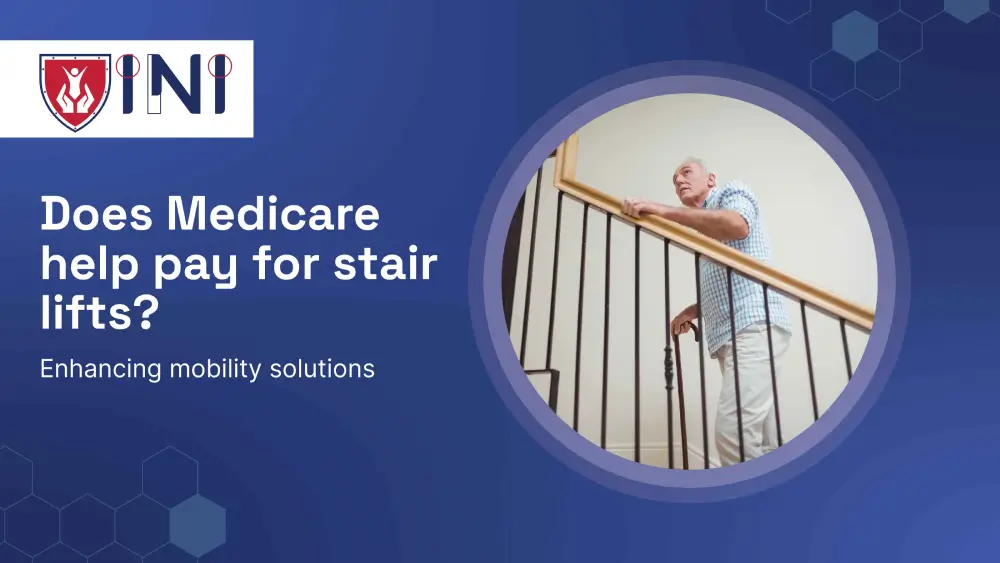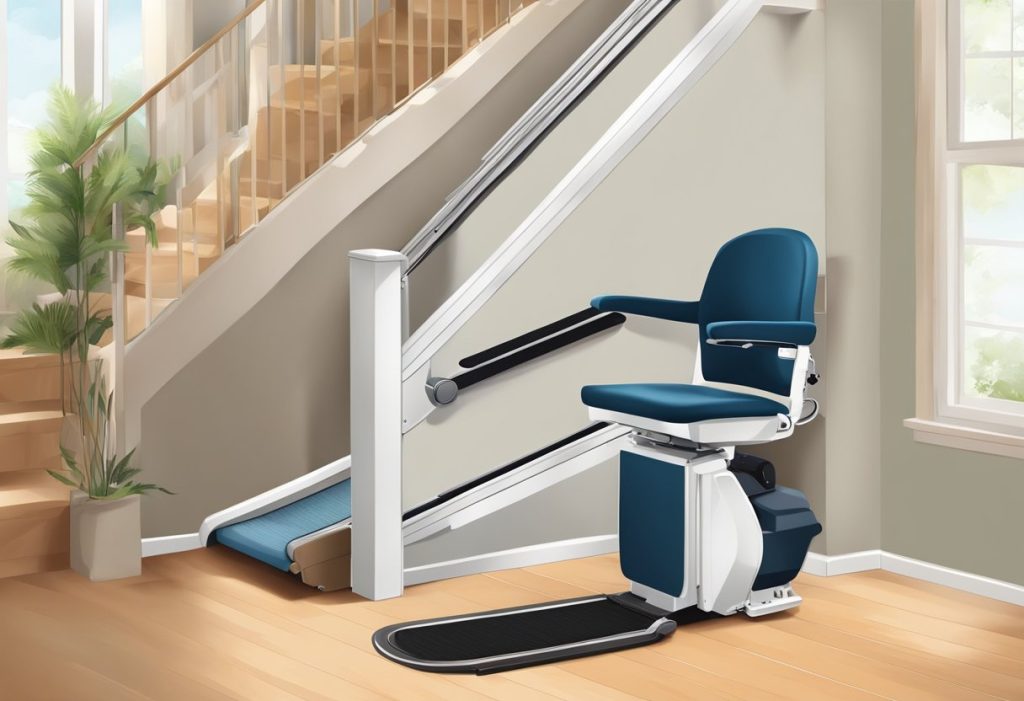Medicare Coverage for Home Modifications: Does Medicare Cover Chair Lifts For Stairs

Navigating the complexities of Medicare coverage can be a daunting task, especially when it comes to home modifications like chair lifts. Understanding the different types of Medicare coverage and the specific benefits that may apply to these modifications is crucial.
Medicare Coverage Options
Medicare offers two main coverage options: Original Medicare and Medicare Advantage. Both options may cover home modifications, but the specific benefits and eligibility requirements differ.
- Original Medicare: This program is divided into two parts: Part A (Hospital Insurance) and Part B (Medical Insurance). While Part A primarily covers inpatient hospital stays, skilled nursing facilities, hospice care, and some home health services, it may not directly cover home modifications like chair lifts. However, Part B, which covers doctor visits, outpatient care, and some medical equipment, might cover a chair lift if it is deemed medically necessary.
- Medicare Advantage: These plans, offered by private insurance companies, are an alternative to Original Medicare. Medicare Advantage plans typically include coverage for Part A and Part B benefits and may offer additional benefits, such as vision, dental, and prescription drug coverage. Some Medicare Advantage plans may also cover home modifications, including chair lifts, but coverage varies widely depending on the specific plan.
Medicare Benefits for Chair Lifts
Medicare may cover chair lifts under two main benefit categories: Durable Medical Equipment (DME) and home health services.
- Durable Medical Equipment (DME): Medicare Part B may cover chair lifts as DME if they are considered medically necessary. DME refers to equipment used in the home for medical reasons, such as wheelchairs, walkers, and oxygen concentrators. A physician must certify the medical necessity of the chair lift, and it must meet Medicare’s requirements for DME, which include being durable, reusable, and intended for use in the home.
- Home Health Services: Medicare Part A may cover some home health services, including skilled nursing care, physical therapy, and occupational therapy. If a patient requires home health services due to a medical condition that makes it difficult to navigate stairs, a chair lift may be considered a necessary part of the home health plan.
Medicare Coverage Criteria for Chair Lifts
Medicare coverage for chair lifts is subject to specific criteria and requirements.
- Medical Necessity: The most important criterion is medical necessity. A physician must determine that the chair lift is essential for the patient’s medical care and that it is the most appropriate solution for their needs.
- Documentation: The physician must provide detailed documentation supporting the medical necessity of the chair lift. This documentation may include the patient’s medical history, diagnosis, and treatment plan.
- Medicare’s Coverage Guidelines: Medicare has specific coverage guidelines for DME and home health services. These guidelines Artikel the types of equipment and services that are covered, as well as the criteria for coverage.
Understanding Medical Necessity for Chair Lifts

Medicare, the federal health insurance program for people aged 65 and older, and certain younger individuals with disabilities, may cover home modifications, including chair lifts, if they are considered medically necessary.
Does medicare cover chair lifts for stairs – Medical necessity is a crucial aspect of Medicare coverage. It refers to the determination that a medical service or item, such as a chair lift, is essential for the diagnosis or treatment of a medical condition, or to prevent a worsening of a medical condition.
Conditions That May Warrant a Chair Lift
Several medical conditions or disabilities could justify the use of a chair lift as a medically necessary home modification.
- Arthritis: The pain and stiffness associated with arthritis can make it difficult to climb stairs, making a chair lift a safe and convenient solution.
- Multiple Sclerosis (MS): MS can affect mobility and balance, making stair climbing challenging and potentially dangerous. A chair lift can enhance safety and independence for individuals with MS.
- Cerebral Palsy: Individuals with cerebral palsy often experience mobility limitations that can hinder stair climbing. A chair lift can help them navigate their homes safely and comfortably.
- Spinal Cord Injuries: Paralysis or weakness resulting from spinal cord injuries can significantly impact mobility, making a chair lift a necessity for accessing different levels of the home.
- Amputation: Individuals with amputations may have difficulty using stairs, especially if they use crutches or a wheelchair. A chair lift can improve their mobility and access to different levels of their homes.
- Heart Conditions: Individuals with heart conditions may find stair climbing strenuous and potentially dangerous. A chair lift can reduce the strain on their cardiovascular system.
- Other Conditions: Other conditions, such as Parkinson’s disease, muscular dystrophy, or chronic obstructive pulmonary disease (COPD), can also impact mobility and make stair climbing difficult or unsafe.
Doctor’s Documentation and Medical Necessity, Does medicare cover chair lifts for stairs
A doctor’s documentation plays a critical role in establishing medical necessity and securing Medicare coverage for a chair lift. The doctor must clearly explain the medical condition or disability that necessitates the use of a chair lift and how it impacts the individual’s ability to navigate their home safely and independently.
The documentation should include:
- A detailed description of the individual’s medical condition or disability.
- An explanation of how the condition affects the individual’s ability to climb stairs safely.
- A statement indicating that a chair lift is medically necessary to address the individual’s needs and improve their safety and independence.
Exploring Alternative Options and Costs

While Medicare may not directly cover chair lifts, there are alternative avenues to explore for obtaining this essential assistive device. These options include private insurance, state programs, and financial assistance. Understanding the coverage details, cost estimates, and application resources associated with each option can empower you to make informed decisions about your financial plan.
Alternative Payment Options and Their Costs
Exploring alternative payment options for chair lifts can be a strategic approach to achieving accessibility and independence at home. Let’s examine some common options and their associated costs.
| Payment Option | Coverage Details | Cost Estimates | Resources for Application |
|---|---|---|---|
| Private Health Insurance | Most private health insurance plans, including employer-sponsored plans and individual plans, cover durable medical equipment (DME) like chair lifts if deemed medically necessary by a physician. However, coverage levels, copayments, and deductibles vary widely depending on the specific plan. | Out-of-pocket costs can range from a few hundred dollars to several thousand dollars, depending on the chair lift model, installation costs, and the insurance plan’s coverage terms. | Contact your insurance provider directly to inquire about coverage details, copayments, and the application process. |
| State Programs | Many states offer programs that provide financial assistance for home modifications, including chair lifts, for individuals with disabilities. These programs often have income and asset eligibility requirements. | The amount of financial assistance available varies by state and program. It can cover a portion of the cost, sometimes even the full cost of the chair lift. | Contact your state’s Department of Aging or Disability Services to learn about available programs and their eligibility criteria. |
| Financial Assistance Organizations | Various non-profit organizations, foundations, and charities offer financial assistance for home modifications, including chair lifts, to individuals facing financial hardship. These organizations often have specific eligibility criteria, such as income level, disability status, or geographic location. | The amount of financial assistance available varies depending on the organization and the individual’s circumstances. It can range from a few hundred dollars to several thousand dollars. | Research online directories of non-profit organizations that provide financial assistance for home modifications. Many organizations have websites with detailed information about their programs and application processes. |
While Medicare may cover chair lifts for stairs in certain situations, it’s also important to consider alternative solutions for comfort and accessibility. If you’re seeking a comfortable and stylish seating option, you might want to explore the big joe bean bag chair australia , known for its plush design and adaptability.
Ultimately, the best choice for your needs will depend on your individual circumstances and preferences, and it’s always wise to consult with a healthcare professional for personalized advice.
Medicare coverage for chair lifts can vary depending on your specific needs and the type of lift you require. If you’re looking for a more comfortable and stylish seating option, you might consider a bean bag chair shell , which can add a touch of personality to your home.
However, for safe and reliable mobility assistance, it’s important to consult with your doctor and a qualified medical equipment provider to determine if a chair lift is the right solution for you.
